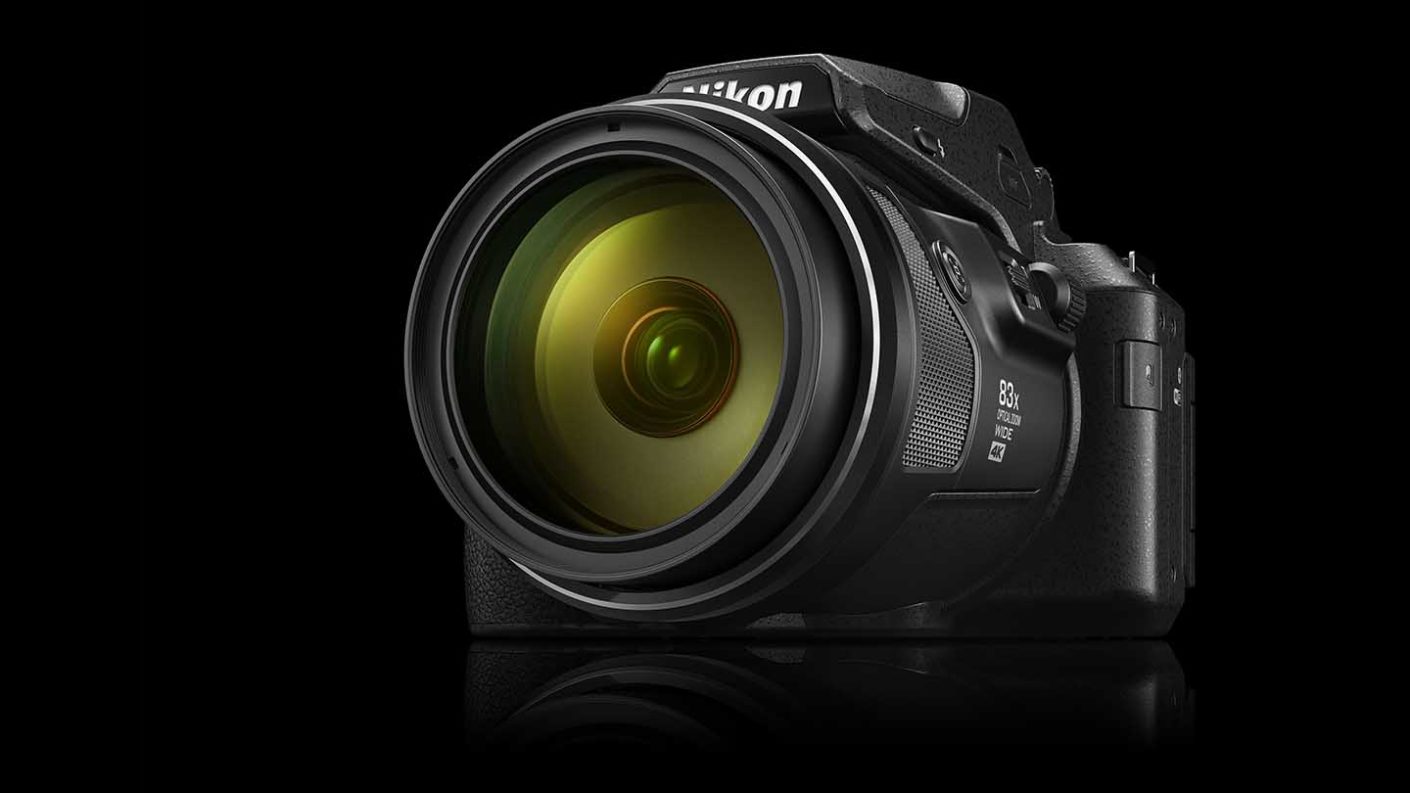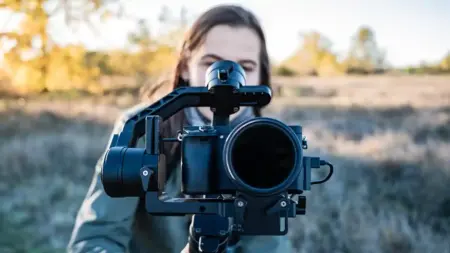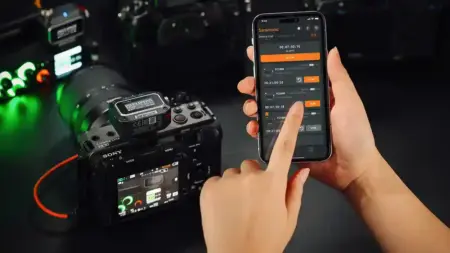If you’re looking for the best beginner camera, it’s worth considering Nikon’s different options. If you’re considering a beginner interchangeable lens camera, it likely means you’ve outgrown your smartphone and want something a little more sophisticated that gives you more control. You want something that will challenge you, but has enough specification for you to grow with it as you advance. The best Nikon cameras for beginners offer this balance with a host of beginner-friendly auto modes to manual controls and advanced specifications that allow for more creativity.
Like the best Canon cameras for beginners, Nikon has options within its fixed-lens compact cameras up to its DSLR range through to its mirrorless Z series cameras. In our view, those choosing a beginner camera would be better off choosing one of Nikon’s DSLRs or mirrorless cameras. These are typically Nikon’s most affordable cameras and are often priced less than many of the advanced compact cameras.
Features from Nikon’s more advanced cameras often trickle down over time to the entry-level option, meaning that you can get a camera for under £500 / $500 that often has a processing engine from more models or an AF system from the previous flagship camera in the range. The best Nikon cameras for beginners are those that offer this excellent value for money.
What’s more, by opting for a Nikon DSLR or mirrorless camera, you’re benefitting from a larger sensor and its better image quality and low-light performance, longer battery life and more accurate autofocus system. There are a number of great options to choose from.
It’s worth noting that Nikon has been phasing out its beginner DSLR cameras as it moves to expand its mirrorless Z range. However, many of these entry-level DSLRs are still readily available for purchase and are still among Nikon’s best beginner cameras.
Below we’ll round up our picks for the best Nikon cameras for beginners based on our tests over the years. Also check out our guide to the best Nikon cameras for an in-depth look at all the options throughout its range. For a deeper dive into the many different camera types and features available, check out our range of camera buying guides.
- Photography for beginners: essential techniques and which cameras to buy
The best Nikon cameras for beginners
Nikon D3500

Specification
- Camera type: APS-C (DX) format DSLR
- Announced: 30th August 2018
- Lens mount: Nikon F
- Sensor: 24.2Mp APS-C (23.5 x 15.6mm)
- Sensitivity range: ISO 100-25,600
- Autofocus system: Viewfinder: 11-point with 1 cross-type, Live View: Contrast detection
- Maximum continuous shooting rate: 5fps (frames per second)
- Viewfinder: Optical with pentamirror 95% coverage
- Screen: 3-inch TFT LCD with 921,000 dots
- Storage: SD/SDHC/SDXC UHS-I
- Dimensions: 124 x 97 x 69.5mm
- Weight: 365g body only
While the Nikon D3500 is now listed as discontinued, no successor has been announced and it can still be found on sale.
Inside the D3500’s monocoque body is an APS-C (DX) format sensor with 24.2 million effective pixels. This is paired with an Expeed 4 processing engine and its a combination that’s capable of delivering excellent-quality images.
With just 11 individually selectable points, the D3500 AF system’s specification may seem unimpressive next that of the average mirrorless camera, but it’s fast and capable of getting moving subjects sharp.
As it’s a DSLR, the D3500 has an optical viewfinder so you see a natural view of the scene with no interpretation by the camera. There’s also a fixed 3-inch screen with 921,000 dots on the back of the camera which can be used to compose images in Live View mode (as well as review them), but the Live View autofocus system is quite sluggish.
One of the main selling points of the Nikon 3500 for beginners is its excellent Guide Mode that teaches the user about photography and the camera controls using non-techy language.
£479
$596For
- Excellent 24Mp APS-C format sensor
- Superb guide mode that teaches you about photography
- Compatible with an extensive range of lenses and accessories
Nikon Z50
Specification
- Camera type: Mirrorless
- Sensor: 20.88Mp APS-C / DX (23.5x15.7mm) CMOS
- Processing engine: Expeed 6
- Lens mount: Nikon Z mount
- Sensitivity range: ISO 100-51,200; expands to 204,800
- Viewfinder: 0.39-inch 2,360,000-dot OLED electronic viewfinder
- Screen: Tilting 3.2–inch 1,040,000-dot touchscreen
- Autofocus: Hybrid (phase and contrast detection) AF with 209 AF points, Eye AF and Subject Tracking. Firmware V.20 adds Eye-detection AF for Animals as well as humans
- Continuous Shooting: 11fps with continuous AF and exposure metering
- Video: 4K at 30fps and Full-HD at 120fps
- Storage: SD/SDHC/SDXC UHS-I
- Connectivity: Snapbridge 2.6; Wi-Fi, Bluetooth
- Dimensions (W x H x D): 126.5 x 93.5 x 60 mm / 5 x 3.7 x 2.4-inches
- Weight: 450g / 15.9oz with battery and memory card but without body cap, 395g /14oz body only
The Nikon Z50 offers is a great beginner Nikon camera users wanting a mirrorless camera with a solid build and a comprehensive feature set they can learn and grow with.
Its autofocus system is excellent and is capable of capturing fast-moving subjects in pin-sharp focus, even in gloomy conditions. Further good news is that the Z50 has both Subject Tracking and Eye AF modes. Eye AF is a must-have feature at the moment and it’s incredibly useful for portraits and social event photography.
Inside the Nikon Z50 is a new 20.88Mp APS-C format sensor which is paired with the Expeed 6 processing engine. Together, these enable a native sensitivity range for stills of ISO 100-51,200 with expansion settings going all the way up to ISO 204,800. Meanwhile, the video range is ISO 100-25,600.
Thanks to the Expeed 6 processing engine, the Z50 can shoot at up to 11 frames per second with continuous autofocusing and exposure metering. This rate is achieved in Continuous High Plus mode while the maximum rate in Continuous High mode is 5fps.
The Nikon Z50 also delivers great video, capturing 4K at 30fps and Full HD at a range of frame rates.
£849
$989For
- Superb build and handling
- AF fast and accurate in low light
- Weatherproof
Nikon Z5
Specification
- Camera type: Full-frame (FX) mirrorless
- Announced: 21st July 2020
- Lens mount: Nikon Z
- Sensor: 24.3Mp full-frame CMOS
- Autofocus system: 273-point Hybrid (combines phase and contrast detection) with Eye AF for humans and animals
- Stabilisation: 5-axis in body
- Viewfinder: Electronic 0.39-inch 3,690,000-dot OLED
- Screen: 3.2-inch 1,040,000-dot tilting touch-screen
- Maximum video resolution: 4K (with 1.7x crop)
- Maximum continuous shooting rate: 4.5fps
- Storage: Dual SD/SDHC/SDXC UHS-II
- Connectivity : Wi-Fi, Bluetooth, SnapBridge
- Dimensions (W x H x D): 134 x 100.5 x 69.5mm (5.3 x 4.0 x 2.8inches)
- Weight: 590g/ 1 lb. 4.9 oz body only, 675g / 1 lb. 7.9 oz with battery and memory card but without body cap
The Nikon Z5 sits at the bottom of Nikon’s full-frame mirrorless Z system as its best beginner full-frame camera.
Combined with the compact Nikkor Z 24-50MM F/4-6.3 kit lens, the Nikon Z5 makes a very attractive camera for everyday photography and travel as, despite it’s full-frame sensor, it’s smaller than some APS-C format DSLRs.
While the maximum continuous shooting rate of 4.5fps doesn’t really impress in 2021, the Z5 still has a good 273-point phase detection AF system with Eye-detection AF for humans and pets. There’s also an excellent 5-axis image stabilisation system built-in and, of course, the Nikon Z mount which means that the Z5 is compatiblae with Nikon’s growing range of Z optics as well as F-mount lenses via the Nikon FTZ adaptor.
Despite being Nikon’s ‘entry-level’ full-frame mirrorless camera, the Z5 has dual SD card slots that are UHS-II compatible and there’s a tilting touchscreen on the back that makes using the camera intuitive.
£1719
€1999 / $1397For
- Compact size and full-frame sensor
- Nikon Z mount
- Best in class viewfinder
Nikon Coolpix P950

Specification
- Camera type: Superzoom bridge
- Date announced: 7th January 2020
- Sensor: 16.0Mp 1/2.3-inch type BSI CMOS
- Lens: 4.3-357mm f/2.8-6.5 (83x zoom equivalent to 24–2000mm)
- Stabilisation: Dual Detect Optical Vibration Reduction
- Viewfinder: 0.39-inch 2,360,000-dot OLED with eye sensor
- Screen: Vari-angle 3.2-inch 921,000-dot LCD
- Max video resolution: 4K at 30p footage, Full HD (1080p) at up to 60p
- Connectivity: Wi-Fi, USB, Bluetooth and SnapBridge, HDMI (clean output), mic
- Dimensions: 140.2 x 109.6 x 149.8mm
- Weight: 1050g
The Nikon P950 is a bridge camera with a massive zoom range offering an equivalent focal length of 24-2000mm. At 2000mm you get an 83x zoom, which gives you a focal range that will cover you for just about any shooting scenario. Whether you want to photograph the moon or an animal on a distant hill, the P950 can make that happen.
If for some reason that optical zoom isn’t enough, the P950 also has a digital zoom function that takes it to the equivalent of 8000mm (333x zoom).
Nikon has also added lens-based stabilisation (VR) for when you are shooting still images, as well as lens and electronic (digital) stabilisation for video shooting. If you’ve ever shot fully zoomed into a scene you’ll know how bouncy it can be and how difficult it is to keep the image stable. Imagine this at 2000mm. Nikon’s stabilisation system helps minimise these vibrations.
On the video side, the P950 can shoot 4K video at 25/30p. Plus there’s a 3.5mm mic port to connect an external microphone and the ability to output a clean feed via HDMI. Full HD footage can be recorded at up to 60p. For a beginner camera, this is enough spec to get you started with room to grow if you want to start experimenting with external audio and more sophisticated set-ups.
Nikon has also made the P950 compatible with its SnapBridge system, which is built-in functionality that uses Bluetooth to transfer images quickly to a paired smartphone. Other features include a 16-megapixel 1/2.3-inch type BSI CMOS sensor, 0.39-inch 2,360,000-dot OLED viewfinder with eye sensor and a 3.2-inch, 921k-dot variety-angle LCD.
£799
$96.95For
- 83x zoom range
- Good quality electronic viewfinder with an eye sensor
- Can shoot raw files as well as Jpegs



